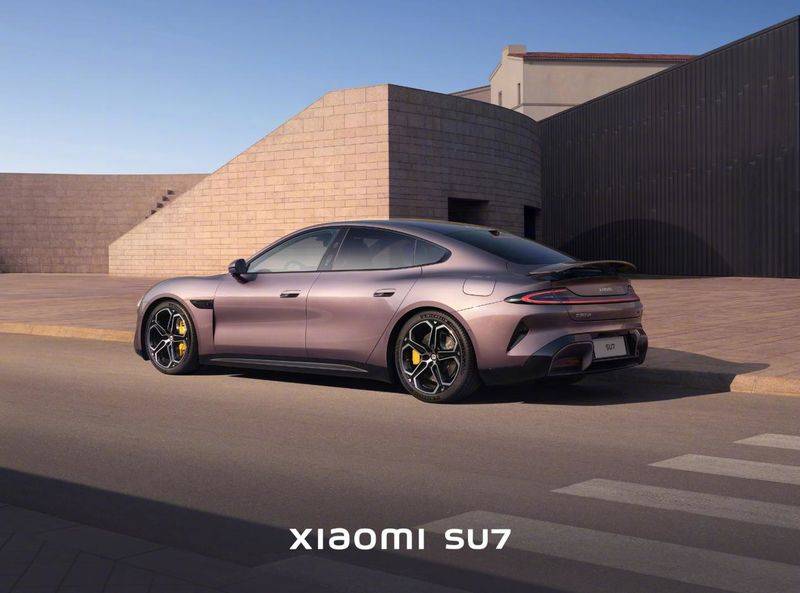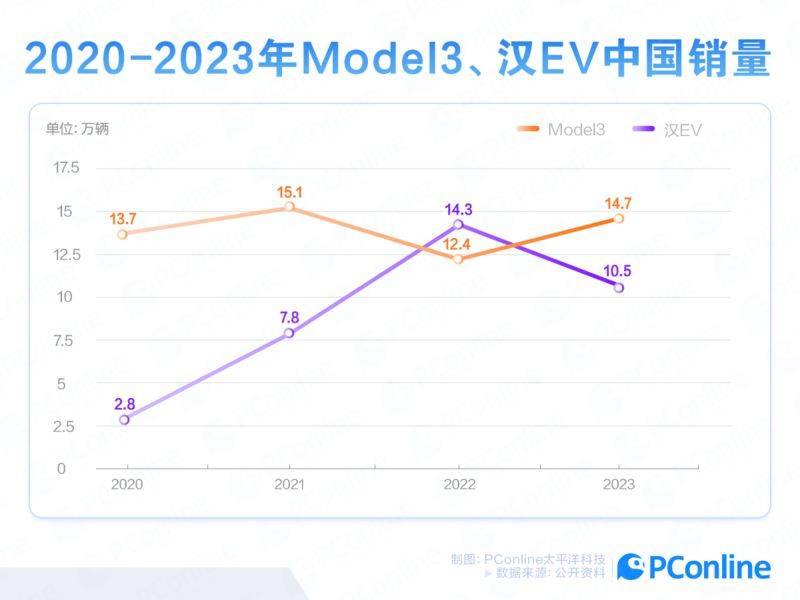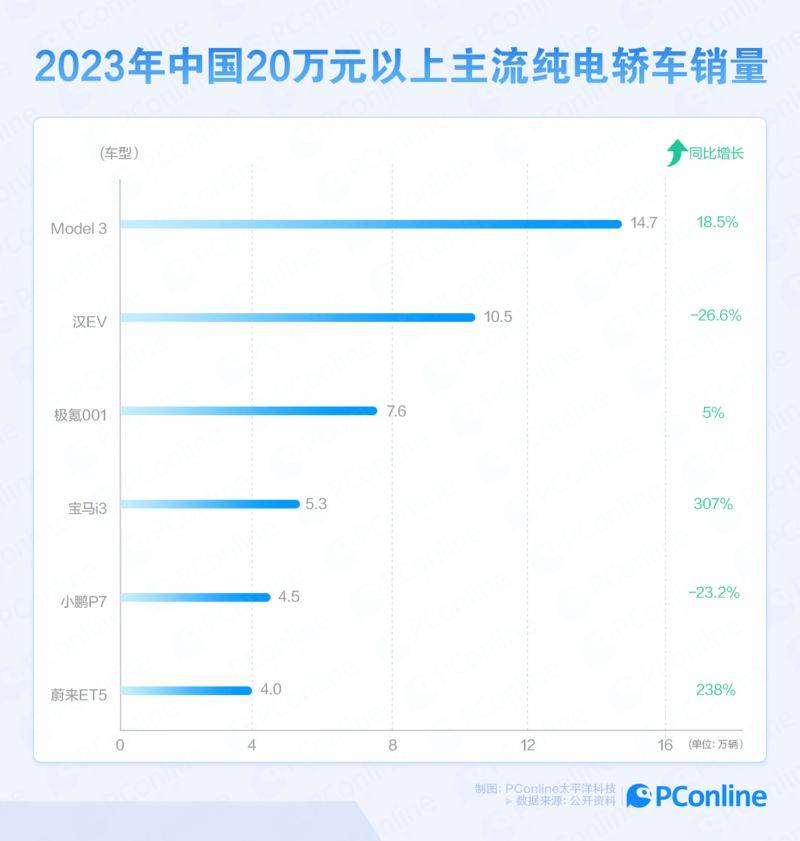Pacific Technology
After months of anticipation and a three-month teaser campaign, Xiaomi finally launched its first electric vehicle, the Xiaomi SU7, on March 28th.
Ever since Xiaomi announced its venture into the automotive industry three years ago, every whisper and rustle related to Xiaomi automobiles seemed to spark heated discussions, trending repeatedly on social media.
Prior to the launch of the Xiaomi SU7 on March 28th, the biggest mystery surrounding the vehicle was its price. In line with Xiaomi’s historical pricing strategy that shook up the smartphone era with products priced at around 1999 yuan, many expected the Xiaomi SU7 to be “the first electric car for young people.” However, Lei Jun, the founder, and CEO of Xiaomi repeatedly emphasized that “Xiaomi’s car is a bit expensive” and “it’s impossible to be priced below 199,900 yuan.”

The public’s expectation for a lower price conflicted with Xiaomi’s internal high-end positioning of the Xiaomi SU7, making the pricing decision particularly complex. Furthermore, the fierce price competition this year made setting the price even more challenging.
On the evening of March 28th, Lei Jun finally addressed this highly anticipated issue, revealing that the Xiaomi SU7 is available in three versions: the Standard Edition priced at 215,900 yuan, the Pro Edition at 245,900 yuan, and the Max Edition at 299,900 yuan.
Breaking an industry norm, Xiaomi did not announce a preliminary pre-sale price that would typically be slashed later to give the illusion of a discount. Given the impressive amount of attention the Xiaomi SU7 had garnered, it deviated from this practice, announcing the final selling price directly.
While pricing may have been the most talked-about aspect of the Xiaomi SU7, it wasn’t the only one.
Xiaomi SU7 offers High-Performance Features
As a pure electric sports sedan, the key selling points of the Xiaomi SU7 are its performance and handling, so targeted developments have been made in acceleration and shock absorption.
In terms of the electric motor and battery life, all versions of the Xiaomi SU7 feature “all-territory silicon carbide” technology. The standard version boasts a CLTC range of 700 km, the Pro version 830 km, and the Max version with a dual-motor all-wheel drive delivers a range of 800 km.
The Max version features an 871V high-voltage platform with the ability to fast charge up to 510 km within 15 minutes, accelerates from zero to a hundred in 2.78 seconds, has a maximum horsepower of 673 PS, peak torque of 838 N·m, and a top speed of 265 km/h; the standard version implements a 486V high-voltage platform, which allows for a fast charge of up to 350 km in 15 minutes.
Handling is crucial for a sports sedan, and the Xiaomi SU7 does not disappoint with its aluminum-made front double-wishbone and rear five-link independent suspension. It is also equipped with an airtight air-spring system co-developed with Top Group, and CDC (Continuously Damped Control) variable dampers provided by ZF. Lei Jun claims that the closed-air spring system improves adjustment speed by 100% compared to traditional open systems.
Coupled with Brembo four-piston fixed calipers, Bosch’s DTB intelligent decoupling, and ESP.10.0 body stability control systems, the Xiaomi SU7 keeps braking distance within 34 meters.
In the realm of smart interactions, something Xiaomi excels at, the Xiaomi SU7 offers mainstream hardware paired with distinctive software features. The cockpit features a Qualcomm Snapdragon 8295 chip and is based on Pengpai OS. It boasts a 16.1-inch control eco-screen with 3K resolution, a 16:10 ratio, a 91.7% screen-to-body ratio, and 1024-level dynamic dimming. The vehicle’s infotainment system also supports the “Mi Share desktop” function that enables easy app flow between smartphones and the car system. Additionally, it supports Apple AirPlay and CarPlay.
Last year’s breakthrough in intelligent driving hasn’t been overlooked by Xiaomi SU7. It comes standard-equipped with intelligent driving assistance, including Xiaomi Pilot Pro and Xiaomi Pilot Max versions, featuring high-speed navigation, one-click valet parking, and more. High-speed NOA is available upon delivery, and urban pilot-assist NOA is set to launch in August this year.
Compared to its similarly priced competitor, the Tesla Model 3, the Xiaomi SU7 is considered superior in key configurations. However, Xiaomi still has to gradually build its brand influence and user base. When compared to other domestic electric sedans like the Jidu Robo-01 and Xpeng P7i, the Xiaomi SU7 holds its ground, particularly excelling in acceleration performance, energy consumption, and intelligence.
Xiaomi Group President Wang Xiang announced during a recent earnings call that the intermediary goal for Xiaomi Automobiles is to enter the top three in sales for luxury electric sedans.
Last year, the electric sedan to rank third in sales above 200,000 yuan was the Jidu Robo-01, averaging 6,300 units sold per month. This year, the newly upgraded Jidu Robo-01, with its competitive starting price of 269,900 yuan, has received more than 20,000 pre-orders in less than a month.
Based on specs and configurations, the Xiaomi SU7 is undoubtedly a formidable contender. However, the uncertainties Xiaomi SU7 faces are not related to the product itself, but rather the common challenges in the “electric sedans above 200,000 yuan” category—is the industry ceiling approaching?
The Challenge of Market Limit for Xiaomi SU7
In 2023, the Tesla Model 3 sold 147,000 units in the Chinese market, an 18.5% increase year-over-year, but a decrease of 4,000 units from the 151,000 units sold in 2021. Moreover, this number is only 10,000 units higher than the 137,000 units sold three years ago.
The Model 3, the best-selling electric vehicle in the Chinese market for over 200,000 yuan, has seen sales hover around 140,000 units for four consecutive years. In the same period, the more expensive Tesla Model Y saw its sales in China increase from 9,000 to 456,000 units, a surge of over 700%, with a year-over-year growth of 44.7% in 2023.
However, the Model 3 isn’t the only model experiencing stagnant growth; BYD Han EV, which held second place in sales at the same price range, also faced similar difficulties, with its 2023 sales down 26.5% to 100,500 units.

Indeed, the growth struggles of these leading models are not isolated to a single model or manufacturer.
Pacific Technology (ID: PConline) found that in 2023, the top six sales of pure electric sedans in China above 200,000 yuan were the Model 3, Han EV, Jidu Robo-01, BMW i3, Xpeng P7 (including Xpeng P7i), and NIO ET5. The total sales of these six models reached 466,000 units, almost on par with the Model Y’s sales of 456,000 units.

Despite an array of new models hitting the market following last year’s surge in 800V architecture and intelligent driving technology, most of these similarly priced models still have underperformance in the market.
Last November, Huawei’s HarmonyOS-powered vehicle, the AITO M7, was released. Priced between 249,800 and 349,800 yuan, sales of this electric sedan in the last two months were 784 and 604 units respectively. Partially, this was due to production issues at the factory.
Two other popular models in the same price range, the Jidu Robo-01 and the Chery Exeed Star – Yuan Plus, also launched in December last year. The Jidu Robo-01 sold 857 and 5,853 units in the last two months, while the Chery Exeed Star – Yuan Plus sold 740 and 504 units, neither achieving ‘hit’ status.
These models have their selling points; in fact, in terms of product capabilities, they usually surpass similarly priced gas-powered vehicles. For example, the AITO M7 features Huawei’s proprietary advanced intelligent driving solution and chassis system; the Jidu Robo-01 is the most affordable car with an 800V architecture and a 100-degree battery; the Exeed Star – Yuan Plus comes standard with an air suspension and CDC electromagnetic damping system, which is rare at this price range, and its price is two ten thousand yuan less than the Model 3. Not long ago, the entry-level model without air suspension and CDC was introduced at a price below 200,000 yuan.
Despite their pricing and configuration advantages, their sales are far from being ‘blockbusters.’
As it turns out, even though pure electric sedans above 200,000 yuan often feature longer ranges than equivalent SUVs for a lower price, consumers significantly prefer buying SUVs over sedans.
According to data from the China Passenger Car Association (CPCA), in December 2023, B+C segment pure electric sedans accounted for only 9.4% of the total Chinese new energy market share, while equivalent pure electric SUVs accounted for 14.2%, far outpacing sedans.
“The Xiaomi Ecosystem”: Both a Challenge and an Opportunity
BYD’s Chairman, Wang Chuanfu, famously commented on the future of electric vehicles: the first half of the new energy vehicle game is about electrification, and the second half is about intelligence.
Starting from the middle of last year, intelligent driving became a hot topic with models like the Xpeng G6 and HiPhi M7 leading the charge. Several manufacturers announced their autonomous driving solutions and timelines, quickly reaching industry consensus. Xiaomi has also promoted intelligent driving as one of the core features of the Xiaomi SU7.
Xiaomi’s heavily marketed “Xiaomi Ecosystem” approach is considered a prime example of “intelligent ecosystem integration,” a concept that multiple manufacturers are striving towards. Its multi-device collaboration capabilities, especially between smartphones and car systems, is so far only rivaled by Huawei’s HarmonyOS ecosystem. Therefore, the “Xiaomi Ecosystem” undoubtedly offers Xiaomi’s automobiles a distinctive function, which is especially notable as Apple has abandoned its car manufacturing efforts, making Xiaomi, in effect, the only smartphone manufacturer to produce electric vehicles independently.
Xiaomi Group President Wang Xiang has also stated that Xiaomi is achieving the world’s only, complete, closed-loop “Xiaomi Ecosystem.”
Lei Jun believes that intelligent electric cars are essentially about “cars x electrification x intelligence.” “Electrification was addressed in the past decade; the coming ten years will be about intelligence. Intelligence will become the deciding factor of this era.”
Recently, Huaxin Securities listed five core technologies of Xiaomi’s automobile, citing motors, batteries, and casting machines, followed by intelligent driving and the “Xiaomi Ecosystem.”
On the other hand, this model has yet to be tested in the market. Whether it’s Huawei or other companies like NIO and Lynk & Co, which have released “car-machine smartphone” collaboration features, they have not yet demonstrated market pull similar to intelligent driving.
Of course, for Xiaomi, this presents a unique opportunity to differentiate itself. If the Xiaomi SU7 can prove its competitive edge within the “Xiaomi Ecosystem,” Xiaomi could establish a new brand label like Huawei and Xpeng’s success in the field of intelligent driving.
With the arrows of Xiaomi SU7 launched, the real test for Lei Jun lies ahead.
According to Xiaomi’s official Weibo account, pre-orders for the Xiaomi SU7 exceeded 10,000 units within just 4 minutes after the launch, 20,000 units in 7 minutes, and 50,000 units after 27 minutes. It appears that at least for tonight, Lei Jun can rest easy.
Note: All prices mentioned in the article are in yuan (CNY). The currency exchange rate and market conditions are subject to change. Please check official sources for the current prices and availability.